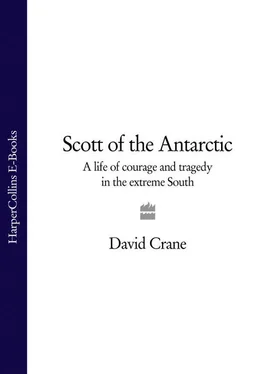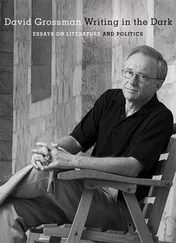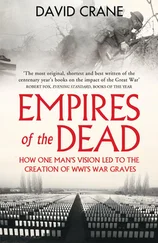It was a short service, without a sermon. ‘Behold I shew you a mystery,’ Dean Inge read from 1 Corinthians XV:
We shall not all sleep, but we shall all be changed,
For this corruptible must put on incorruption, and this mortal must put on immortality.
So when this corruptible shall have put on incorruption, and this mortal shall have put on immortality, then shall be brought to pass the saying that is written, Death is swallowed up in victory.
O death where is thy sting? O grave where is thy victory?
As St Paul’s ringing challenge faded away, the sounds of a drum roll swelled, and the Dead March from Saul filled the cathedral. For all those present this was a moment of almost unbearable poignancy, but with that ceremonial genius that the imperial age had lately mastered, the most memorable and starkly simple was still to come.
As the Prayer of Committal was read, the names of the dead – Robert Falcon Scott, Lawrence Oates, Edmund Wilson, Henry Bowers, Edgar Evans – filled the ‘stricken silence’ of the dimly lit church with their absence. ‘As we go down to the dust,’ the choir sang, just as they had done to the same Kieff chant at the memorial service for those lost on the Titanic , ‘and weeping o’er the grave we make our song: Alleluia! Alleluia! Alleluia! Give rest, O Christ, to Thy servants with Thy Saints, where sorrow and pain are no more, neither sighing, but life everlasting.’
With a final hymn sung by the whole congregation, and a blessing from the Archbishop, the service was over. The National Anthem was sung to the accompaniment of the Coldstreams’ band, and as the sound reached the streets outside the vast crowd of some ten thousand still waiting took it up. The King was escorted to the south door, and to the strains of Beethoven’s ‘Funeral March on the death of a hero’, the congregation slowly dispersed.
For all its simplicity and familiarity, it had in some ways been an odd service, combining as it did the raw immediacy of a funeral with the more celebratory distance of a memorial. It might have been only four days since the news from Oamaru reached England, but by that time Scott and his men had been dead for almost a year, their bodies lying frozen in the tent in which they had been found. ‘There is awe in the thought that it all happened a year ago,’ the Daily Sketch had written on 11 February, shamelessly milking the idea for all the pathos it was worth. ‘When Amundsen came back in the spring of last year and Polar discussions were in all men’s mouths and newspapers – even then, the Englishmen, the goal accomplished, lay quiet in the snows. Through the months since … while wives and friends set forth for meetings and counted time, they lay oblivious. All was over for them long ago.’
For the families of the dead there could be nothing but bitterness in the thought, but for the nation as a whole it made the transition from grief to celebration that much easier. In its columns the Sketch might ‘quiver in unison’ with the ‘lonely pathetic figure’ of Scott’s wife ‘on the far Pacific’, but the lapse of time had an important psychological impact, subsuming the recent past into a longer historical narrative in a way that enabled the country to metamorphose the reality of that tent into an icy shrine, and Scott and his men into the quasi-legendary heroes they immediately became.
Above all else, however, it was a sense of absence rather than presence that contributed most profoundly to the mood of national mourning in a way that looked forward to the psychology of the Cenotaph and the Unknown Soldier rather than back to any precedent. During the November of 1920 the hundreds of thousands who filed past the tomb of the Unknown Soldier could all superimpose their own image on the nameless and rankless corpse, and in a similar way the men and women who mourned Scott all had different ideas of precisely what they were mourning.
To some the meaning of the deaths of Scott and his men was religious, to others secular; to some they were the embodiment of Christian sacrifice or English chivalry, to others again of pacific courage or scientific dedication. ‘No more pathetic and tragic story has ever been unfolded,’ The Times ’s leader announced on the twelfth, just twenty-four hours after the country had begun to digest the news, ‘than that of the gallant band of Antarctic explorers whose unavailing heroism now fills the public mind with mingled grief and admiration … Nothing in the painful yet inspiring narrative is more touching than the fidelity with which CAPTAIN SCOTT and his comrades, fighting for their very lives with the remorseless forces of Nature, clung in ever increasing peril and weakness to the scientific records and geological specimens which it was the primary object of their expedition to secure. It is thus that they snatched victory out of the jaws of death … The admiralty regards them, and the Navy honours them, as “killed in action”, and the civilized world will endorse the verdict.’
There was something, however, about the response to Scott’s death that differentiates it sharply from the mourning over the grave of the Unknown Soldier. There can be no doubting the reality of people’s grief when the news reached England, but it was a grief shot through with a sense of gratitude to the men who had restored to them their emotional birthright as Englishmen. ‘The keynote of this wonderful “In Memoriam”,’ the Daily Sketch proudly wrote, ‘was at once its simplicity and its quiet exultation.’ ‘To mourn!’ it demanded, the day after the memorial service. ‘Yes, we had come to mourn – yet not with wailing and lamenting, but rather with a song of thankfulness for that these sons of our common country had died as they had lived, in the spirit which is the noblest heritage of Englishmen … Could Nelson, sleeping in the crypt below, hear those mighty trumps of a nation’s requiem, he would know that though the years roll on, yet, as long as England expects, there are heroes of her blood and race to answer truly to the call.’
The real value of their deaths, The Times insisted, ‘is moral and spiritual, and therefore in the truest sense national. It is a proof that in an age of depressing materialism men can still be found to face known hardship, heavy risk, and even death, in pursuit of an idea, and that the unconquerable will can carry them through, loyal to the last to the charge they have undertaken. That is the temper of men who build empires, and while it lives among us we shall be capable of maintaining the Empire that our fathers builded … So we owe honour and gratitude to Captain Scott and his companions for showing that the solid stuff of national character is still among us, and that men are still willing to be “killed in action” for an idea.’
The news of Scott’s death would have struck a chord at any time, but what is easily ignored in all this is that it came at a moment when Britain was in urgent need of the kind of reassurance it seemed to offer. The horrors of the First World War have cast so seductive a glow over the age that immediately preceded it that it is easy to forget what it was really like, seeing it instead as a last Golden Age, a final swansong of patrician ease and self-confidence before the watershed of the Somme and Jutland destroyed its certainties for ever.
There is something about the iconography of the period, too – something about its ripeness of institutional expression, its imperial gravity, its command of ritual – that no amount of historical deconstruction can shake. This has nothing in any crude sense to do with the mere exercise of power, but from the rent rolls of its statesmen to the flickering cinematographic dumb-show of the old Queen’s Jubilee parade, the age before the Great War still projects an illusion of ceremonial and functional harmony that seems to paralyse dissent.
Читать дальше












![John Bruce - The Lettsomian Lectures on Diseases and Disorders of the Heart and Arteries in Middle and Advanced Life [1900-1901]](/books/749387/john-bruce-the-lettsomian-lectures-on-diseases-and-disorders-of-the-heart-and-arteries-in-middle-and-advanced-life-1900-1901-thumb.webp)